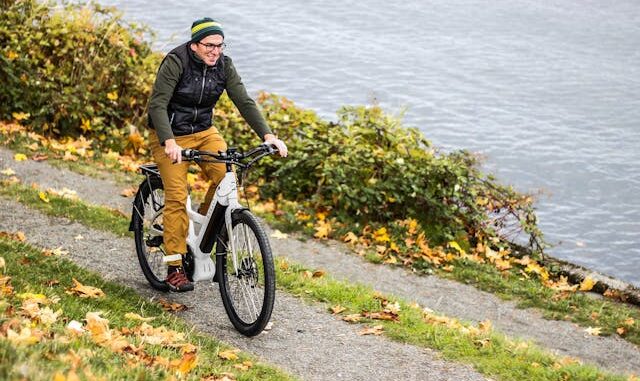
Please note: As an Amazon Associate we earn from qualifying purchases. Details here.
Is 250W enough power for an electric bike? Yes, 250 watts is enough for an e-bike for most riders in typical situations.
It works well on flat roads and gentle hills for average-weight people. A 250W e-bike is good for daily commuting and casual rides, especially with a mid-drive motor.
However, heavier riders (over 220 pounds), those regularly tackling steep hills, or carrying heavy cargo may benefit from motors with higher power ratings where legally permitted.
Most people think wattage was just a simple number, but there’s a lot more to it.
So, let’s break down what 250W really means in real-world riding and why peak power matters more than you think.
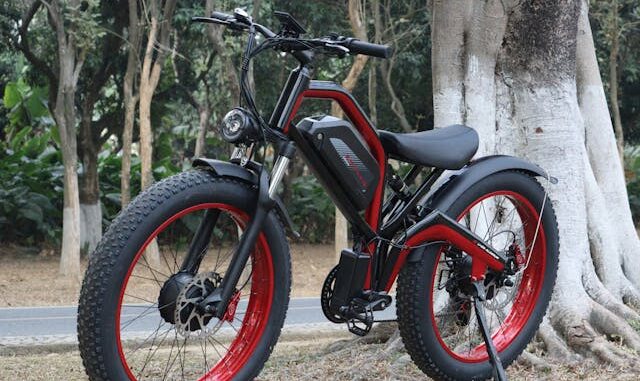
What Wattage Actually Means
When we talk about a 250W e-bike motor, we’re referring to its nominal or continuous power rating.
It’s the power that it can sustain during normal operation. However, this doesn’t tell the complete story.
Most 250W motors can actually deliver peak power outputs of 400-600W for short bursts, such as when climbing hills or accelerating.
This temporary power boost is essential for overcoming obstacles but isn’t reflected in the standard rating.
For context, a moderately fit cyclist can generate about 100-150W of power continuously through pedaling.
So even a 250W motor effectively doubles or triples your output, providing significant assistance.
Rated Power vs. Peak Power
If you’re trying to figure out whether a 250W motor is enough, understanding the difference between rated and peak power is key.
Rated power (like 250W) tells you what the motor can handle consistently.
Peak power is the extra boost it can give during short bursts, like climbing a hill or getting up to speed at a stoplight.
I’m including this because just looking at the rated number doesn’t always tell the full story.
Knowing how peak power works can help you avoid underestimating what a 250W e-bike is actually capable of.
Legal Considerations
250W has become the global standard for e-bike motors because it strikes a balance between effective assistance and safety.
This power level helps e-bikes feel more like traditional bicycles and keeps speeds manageable on shared roads and paths.
Motors with higher power can reach faster speeds, which may increase safety concerns and lead to stricter regulations.
However, while 250W is widely accepted as the standard, power limits do exist and vary by region:
- Australia: 250W max under Vehicle Standards
- United States: Up to 750W allowed, assistance up to 20 mph
- Canada: Generally up to 500W allowed, assistance up to 32 km/h (20 mph)
- European Union and United Kingdom: 250W max, assistance cuts off at 25 km/h (15.5 mph)
Exceeding these limits often reclassifies the vehicle as a moped or motorcycle, which may require registration, insurance, and a license.
How Many Watts Should an E-Bike Have?
The ideal power rating for your electric bike largely depends on your riding environment.
Have a look at this e-bike motor wattage requirement chart:
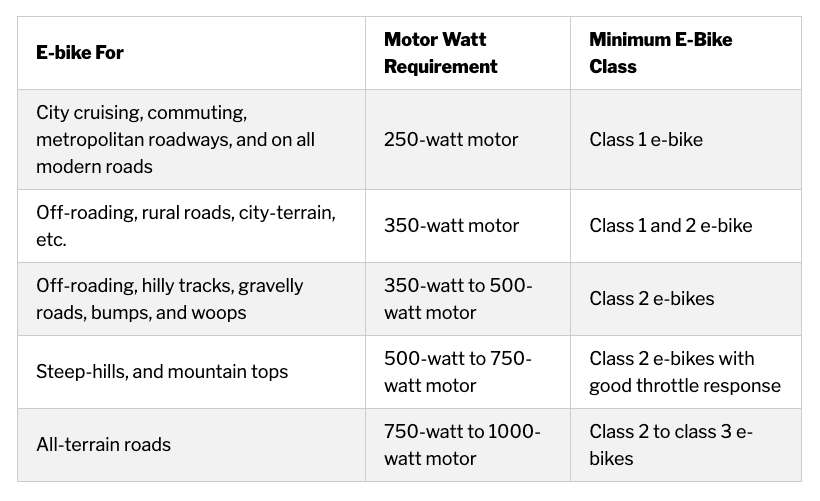
As you can see…
For daily urban commuting and flat city routes, a motor between 250W and 350W typically provides sufficient assistance.
However, if you regularly tackle hilly landscapes, you’ll want to consider at least a 500W motor to handle the inclines comfortably.
While pedal-assist systems (PAS) help supplement a 500W motor’s output, they don’t dramatically transform the riding experience at this power level.
For maximum versatility, particularly for larger riders, 750W to 1000W motors (equivalent to 1 horsepower) deliver exceptional performance across various terrains, from beach sand to snow-covered paths, and everything in between.
These high-powered options can reach impressive speeds of 25-30 miles per hour, making them perfect for recreational racing with friends or conquering challenging landscapes with ease.
This leads me to the next point to understand e-bike power requirements.
Factors Affecting E-Bike Performance
Now let’s talk about what actually impacts performance before determining if it’s enough for your specific needs.
The effectiveness of a 250W motor varies dramatically based on several key factors:
-
Rider Weight and Load
Perhaps the most significant factor affecting e-bike performance is the total weight the motor must propel.
Lighter riders typically find 250W provides ample assistance, while average riders generally find 250W sufficient for flat and moderate terrain.
Heavier riders may find a 250W motor struggles on inclines without significant pedal input.
Don’t forget to account for cargo weight, which can add substantial pounds for commuting gear, groceries, or child seats.
Physics simply demands more power to move greater mass, especially uphill.
-
Terrain and Elevation
Your local geography plays a crucial role in determining power needs.
While 250W provides good assistance on flat terrain for most riders and remains helpful with moderate pedaling input on gently rolling hills, steeper hills may require significant pedaling effort with a 250W motor.
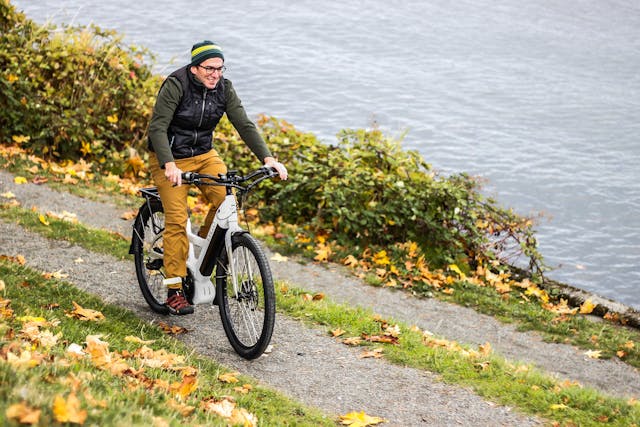
Mountain regions with extended climbs can be challenging with only 250W power.
Basic cycling physics demonstrates that climbing inclines requires substantially more power than riding on flat ground.
When climbing, a typical cyclist might need to produce significantly more power to maintain speed, which is why e-bike assistance becomes particularly valuable on hills.
A 250W motor can provide meaningful help for many riders on moderate inclines, but steeper or longer climbs may require more rider input or a more powerful motor.
-
Motor Type and Efficiency
Not all 250W motors are created equal.
The motor’s design and placement significantly impact performance. Hub motors (located in the wheel) are generally simpler and less expensive but less efficient on hills.
Mid-drive motors (at the pedal assembly) leverage the bike’s gearing system for better hill-climbing ability.
A 250W mid-drive motor can often outperform a 350W hub motor on hilly terrain due to its mechanical advantage through the bike’s gearing system.
-
Torque Output
While wattage measures power output, torque (measured in Newton-meters or Nm) indicates the rotational force the motor produces.
Higher torque translates to better hill-climbing ability, stronger acceleration from a stop, and improved performance under load.
E-bike motors with the same wattage can deliver different torque values depending on their design and quality. Entry-level motors generally offer less torque than premium motors of the same wattage rating.
The difference in torque becomes noticeable when starting from a stop or tackling inclines.
Some high-quality 250W mid-drive motors from leading manufacturers can outperform higher-wattage motors with less torque, particularly on hills where leveraging the bike’s gears provides a mechanical advantage.
-
Battery Capacity and Range
While not directly related to the power question, battery capacity plays a crucial role in the e-bike experience and is often correlated with motor size. Typical e-bikes come with batteries ranging from 300-700Wh.
Range varies significantly based on:
- Riding style
- Rider weight
- Wind conditions
- Assistance level used
- Terrain (flat versus hilly)
The same battery will provide longer range on flat terrain than in hilly areas, and using lower assistance levels will extend range considerably.
Pairing your setup with a high-quality e-bike battery can make an even bigger difference.
Matching Power to Rider Profiles
This being said…
Based on the aforementioned factors, here’s my guidance on choosing the right power level:
When Is 250W Enough for an E-Bike? (Save Your Money)
For average-weight riders under 220 lbs on flat to moderate terrain, a 250W motor provides plenty of assistance without waste.
Fitness enthusiasts appreciate how 250W offers just enough help to extend rides without taking over the workout.
Urban commuters find this power level perfect for navigating city streets with occasional gentle hills, providing smooth handling in traffic.
Those looking to maximize range also benefit from 250W’s efficiency, as lower power draw means more distance per charge.
And of course, riders in regions with 250W legal limits like the EU, UK, and Australia can comply with regulations while still enjoying electric assistance.
Who Should Consider More Than 250W?
Heavier riders over 220 lbs will experience noticeably smoother rides and better hill climbing with 500W+ motors, particularly when starting from stops.
Anyone regularly carrying substantial cargo or children needs additional power (typically 500W+) to maintain stability and control when fully loaded.
Off-road enthusiasts benefit from the extra torque of 500-750W motors when tackling loose surfaces, sand, and technical terrain.
Similarly, those with mobility limitations often find higher power options deliver a more accessible riding experience, reducing physical strain on longer or more challenging routes.
Residents of hilly areas facing regular steep inclines will appreciate motors in the 500W+ range, especially if paired with high-torque systems that tackle grades without hesitation.
Remember that torque ratings and motor design can sometimes matter more than raw wattage numbers. A high-quality 250W mid-drive with excellent torque often outperforms a basic 500W hub motor on challenging terrain.
Tips for Maximizing 250W Performance
If you’ve decided a 250W ebike is right for you (whether for legal reasons, budget considerations, or efficiency), here are several ways you get the absolute most from this power level.
These practical tweaks and considerations can make a surprising difference in how capable your bike feels on daily rides.
1. Choose a Mid-Drive Motor
Mid-drive motors use your bike’s gears to their advantage, making climbs and technical terrain easier to handle.
This means your 250W motor can deliver power more efficiently than typical hub motors.
2. Prioritize High Torque Ratings
Look beyond wattage and focus on torque (measured in Nm).
A 250W motor with higher torque, around 70-80Nm, will perform much better on starts and hills than one with lower torque.
3. Maintain Optimal Tire Pressure
Keeping your tires properly inflated reduces rolling resistance.
Even a slight drop in pressure, like 5-10 PSI below recommended, can make your motor work harder and shorten battery life.
4. Master Appropriate Gearing Techniques
Shifting to a lower gear before hills helps maintain momentum and eases the motor’s workload. This simple approach preserves battery life and keeps your ride smooth.
5. Keep Battery Charge Above 20%
Performance often declines noticeably when battery levels fall below 20%.
Staying above this threshold ensures consistent power, especially when climbing or accelerating.
6. Select Models with Torque Sensors
Torque sensors adjust motor assistance based on your pedaling effort, providing a natural and responsive ride.
This makes power delivery smoother and more efficient than cadence-based systems.
7. Distribute Cargo Weight Evenly
Balanced loads improve handling and motor efficiency.
Uneven weight can force the motor to compensate, reducing power for forward motion and draining the battery faster.
Is 250W Enough for an Electric Bike? (FAQs)
Still unsure whether 250W will meet your needs?
This section tackles the most common questions riders have to help you make a confident decision.
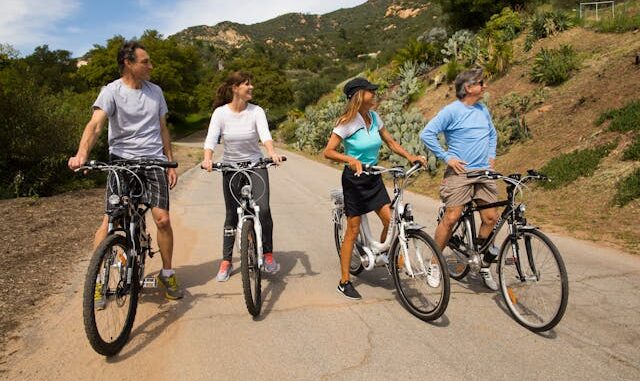
Is 250W enough power for an electric bike?
Yes, 250W is enough for casual rides, commuting, and moderate terrain.
It may feel underpowered on steep hills or when quick acceleration is needed, but most 250W motors can deliver 400–600W peak power for short bursts to help in those moments.
How does terrain affect whether 250W is enough?
On flat terrain, a 250W motor provides ample assistance for nearly all riders.
For gently rolling hills, it remains sufficient with moderate pedaling input. However, steep hills (8%+ grade) will require significant pedaling effort with a 250W motor.
Mountain regions with extended climbs may demand more than 250W, especially for heavier riders.
Your local geography plays a crucial role in determining your power needs.
What’s more important: watts or torque?
While wattage measures power output, torque indicates the rotational force the motor produces and is often more important for real-world performance.
Higher torque translates to better hill-climbing ability and stronger acceleration from a stop.
Basic 250W motors typically produce 35-40 Nm of torque, while premium 250W motors can deliver 60-80 Nm.
Some high-torque 250W mid-drive motors can outperform higher-wattage motors with less torque, especially on hills.
How does motor wattage affect battery life and range?
Higher wattage motors typically consume more energy, which can reduce your overall range.
A 250W motor is quite efficient, often allowing 40-70 miles on a single charge depending on the battery capacity and riding conditions.
A 500W or 750W motor might cut that range by 30-50% with the same battery.
If maximum range is important to you, a 250W motor paired with a high-capacity battery (above 500Wh) offers the best combination for long-distance riding without frequent recharging.
Can I upgrade a 250W e-bike to a higher power motor later?
Generally, upgrading just the motor isn’t recommended or straightforward.
E-bikes are designed as integrated systems with controllers, batteries, and frames matched to specific motor specifications.
Upgrading from 250W to a higher wattage typically requires replacing the controller and often the battery as well, which can be costly and may void warranties.
Some brands offer interchangeable motor systems, but these are the exception rather than the rule. It’s usually more practical to choose the appropriate power level when purchasing.
Is 250 Watts Enough for an E-Bike? (Verdict)
So…
Is 250W enough power for an electric bike?
For most riders in most situations, yes.
A 250W e-bike provides sufficient assistance for comfortable riding on flat to moderately hilly terrain, especially with a quality mid-drive motor with good torque output.
Riders weighing over 220 pounds or facing very steep terrain may benefit from more power where legally permitted.
The 250W standard represents a thoughtful balance between assistance and the traditional cycling experience that works remarkably well for the majority of users.
Now I’d like to hear your thoughts:
- What kind of terrain or riding do you use your e-bike for?
- Have you found 250W to be enough, or do you prefer a higher-powered setup?
Let me know in the comments!
READ NEXT: Can You Take an Electric Bike on a Plane?

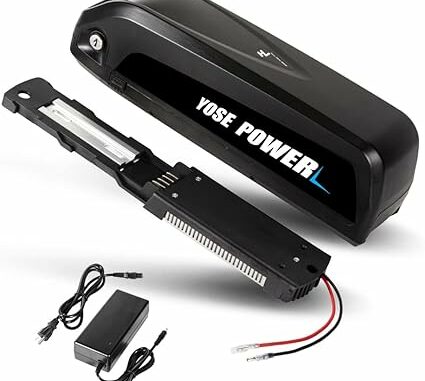
Be the first to comment